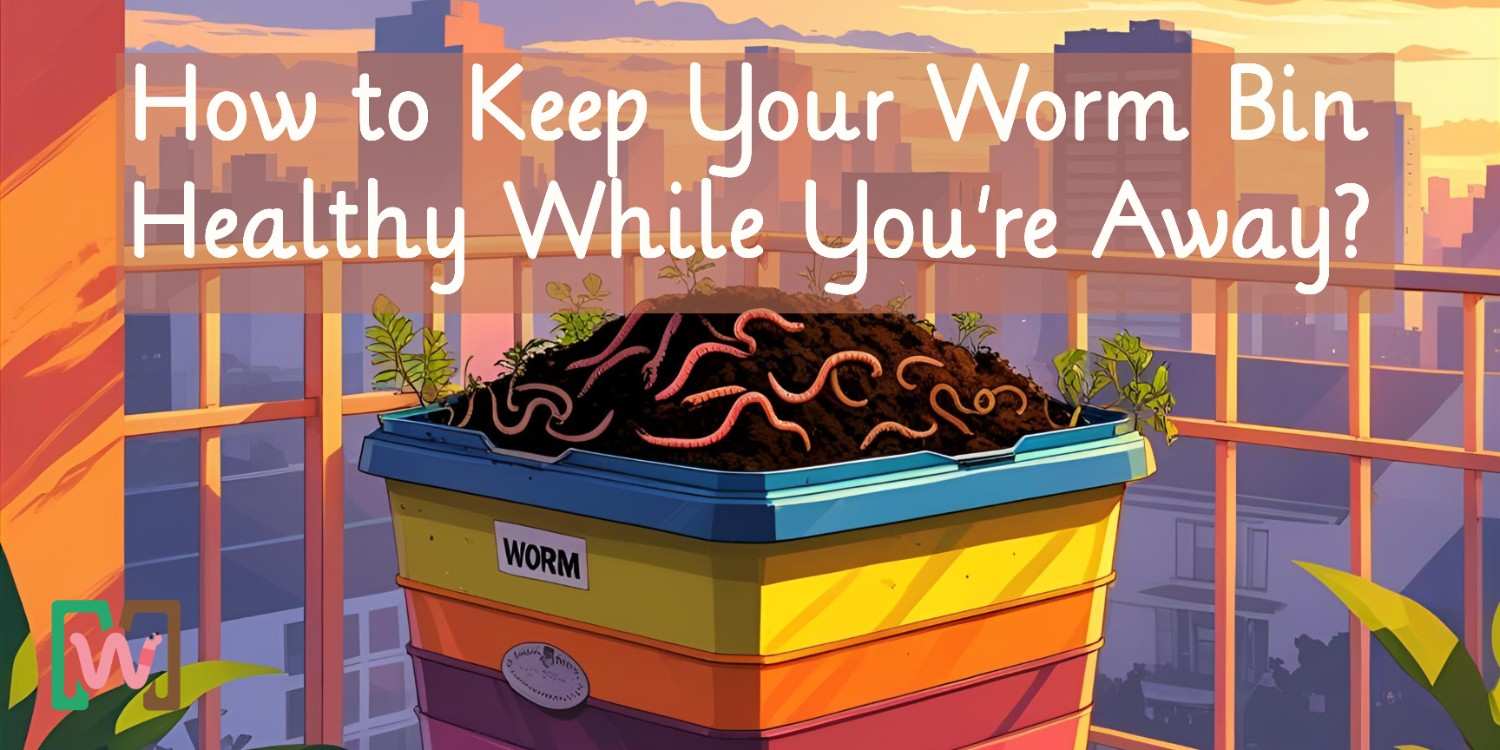When you need to leave home for a few days—or even a couple of weeks—you can still keep your vermicompost bin thriving. In our recent video, “Meme’s Easy Guide to Keep Worms Happy While You're Away,” offers a proven strategy for maintaining worm health during short absences. This article captures our practical tips and advice with pure informational value, reflecting expertise and trustworthiness.
Checkout our video for superfast this blog:
1. Understand Why Short Absences Matter
Before diving into instructions, we explain how worm bins function. Worms rely on a balanced habitat: temperature, moisture, air, bedding, and food. When neglected even a few days, moisture can fluctuate, bedding may dry out or become compacted, and food can spoil—creating odors, mold, or inhospitable conditions. A little prep goes a long way in avoiding breeding issues or worm stress.
2. Step-by-Step Vacation Preparation

a) Top up with Bulk Bedding
Use a sizeable layer of bedding such as shredded cardboard, paper, or coir—ideally around 2–3 inches thick. This acts like a sponge to lock in moisture and prevent compaction. Bedding also absorbs any extra moisture from food breakdown.
b) Pre-moisten Bedding Lightly
Before adding bedding, ensure it’s moist—not soggy, but damp. Mix thoroughly so the worms don’t get stuck in dry pockets. This supplies moisture for several days while you’re away.
c) Feed Generously at Once
Give the worms a generous meal before you go, ideally in the center of the bin. Use small‑to‑medium portions—such as kitchen scraps, crushed eggshells, and coffee grounds. Place food slightly off‑center so worms can access it gradually without crowding one side. Avoid overly wet foods like melon or citrus excess.
d) Add a Moisture Buffer Layer
After feeding, lay down another thin damp layer of fresh bedding. This seals in the food and keeps it moist and mold‑free, giving worms time to begin processing it before it degrades.
e) Maintain Ventilation
Ensure the bin lid is not sealed airtight. I emphasize the need for good airflow: too much humidity leads to anaerobic conditions, too little causes drying. Punch holes or loosely rest the lid to balance.
f) Place in a Stable Location
Worms prefer moderate temperatures—ideally 15–25 °C (60–77 °F). Avoid direct sun or freezing conditions. I advise locating the bin in a shaded garage, basement, or indoor corner that stays relatively climate‑controlled.
3. What to Do If You’ll Be Gone Longer?
I note that if you plan to be gone more than two weeks, consider harvesting the worms just before you go, storing them temporarily in a buffered medium like moist coconut coir or shredded paper, and re‑feeding properly on your return. Alternatively, skip feeding entirely and leave only bedding—the worms will slow down and enter a low‑activity state. These options reduce spoilage and odor.
4. Monitoring and Aftercare Tips
Upon return:
-
Check moisture: bedding should feel damp—not bone‑dry or waterlogged. If too wet, gently lift bedding to let air in and remove soggy zones.
-
Inspect for pests: dark or moldy food can attract fruit flies or gnats. Remove any visible pests and compost affected material separately.
-
Harvest castings if ready, and add fresh bedding and a normal feeding cycle.
-
If you skipped feeding while away, start with small quantities and ramp back up over a few days.
5. Why This Method Works: The Science behind It
-
Moisture maintenance: A pre‑moistened sponge layer balances water content and prevents both excess humidity and dryness.
-
Bedding as buffer: Shredded cellulose materials not only absorb moisture but regulate airflow and offer safe spaces for worms.
-
Staged feeding design: Central feeding with a cover layer delays spoilage and encourages worms to move gradually.
-
Air exchange: Ventilation mitigates harmful anaerobic conditions that can harm worms.
-
Temperature stability: Placement in a moderate spot helps avoid stress from extremes.
6. Tips & Tricks from Meme
-
Use carbon‑rich bedding (shredded cardboard or paper) rather than high‑nitrogen items to avoid ammonia spikes.
-
Avoid citrus, onion, oily or spicy scraps when feeding before departure—those can spoil faster or harm worms.
-
If you anticipate hot weather (e.g. over 30 °C/86 °F), freeze damp bedding briefly to cool it before mixing—this avoids shocking worms.
-
Set the bin on a tray or shallow pan in case any excess moisture leaches out while you’re gone.
-
For extra assurance, slip in a moisture strip or DIY hygrometer near the top—helps check humidity visually before departure.
Frequently Asked Questions (FAQs)
1. Can I use any type of bedding for vacation prep?
Prefer carbon‑rich, absorbent bedding—like shredded cardboard, paper, or coco coir. Avoid non‑organic or waxed paper, and steer clear of high‑nitrogen materials that can generate ammonia.
2. What if my worm bin is very dry before leaving?
Add water gradually to moisten bedding uniformly—don’t pour water in. If extremely dry, moisten in stages over a few feedings, ensuring bedding reaches damp consistency.
3. Is it safe to skip feeding entirely if I leave for a week or two?
Yes—for short absences (up to two weeks) you can skip feeding. Worms will slow down naturally. Ensure bedding remains moist and aerated, then resume small feedings on return.
4. How much extra bedding should I add before going?
Add at least 2–3 inches of fresh bedding after the final feed. Pre‑moisten before adding, then top with another damp layer to seal in food.
5. Can pests or mold develop while I’m away?
If food spoils or stays too moist, mold or fruit flies can appear. Prevent this with layered feeding, carbon‑rich bedding, and adequate airflow. Remove any visible pests when you return.



Leave a comment
All comments are moderated before being published.
This site is protected by hCaptcha and the hCaptcha Privacy Policy and Terms of Service apply.